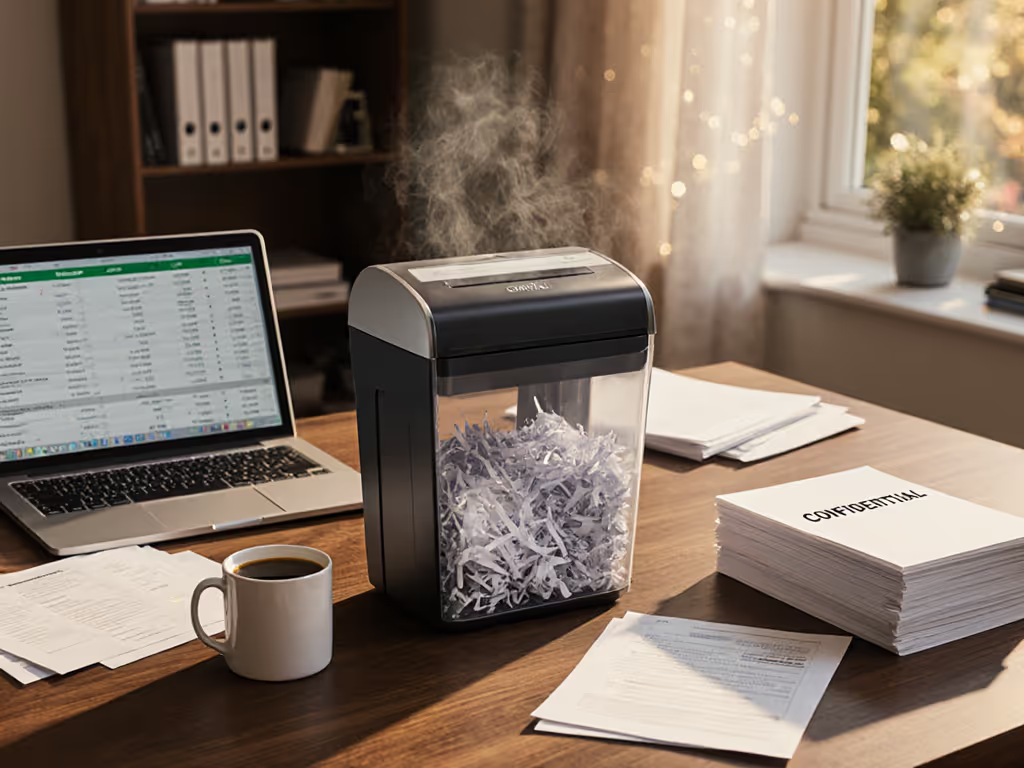
Shredder Bin Capacity: Real Performance Impact
Learn how bin size, security level, and design choices affect jams, dust, energy use, and maintenance - and use a simple formula and quick tests to choose the right capacity and keep shredding reliably.
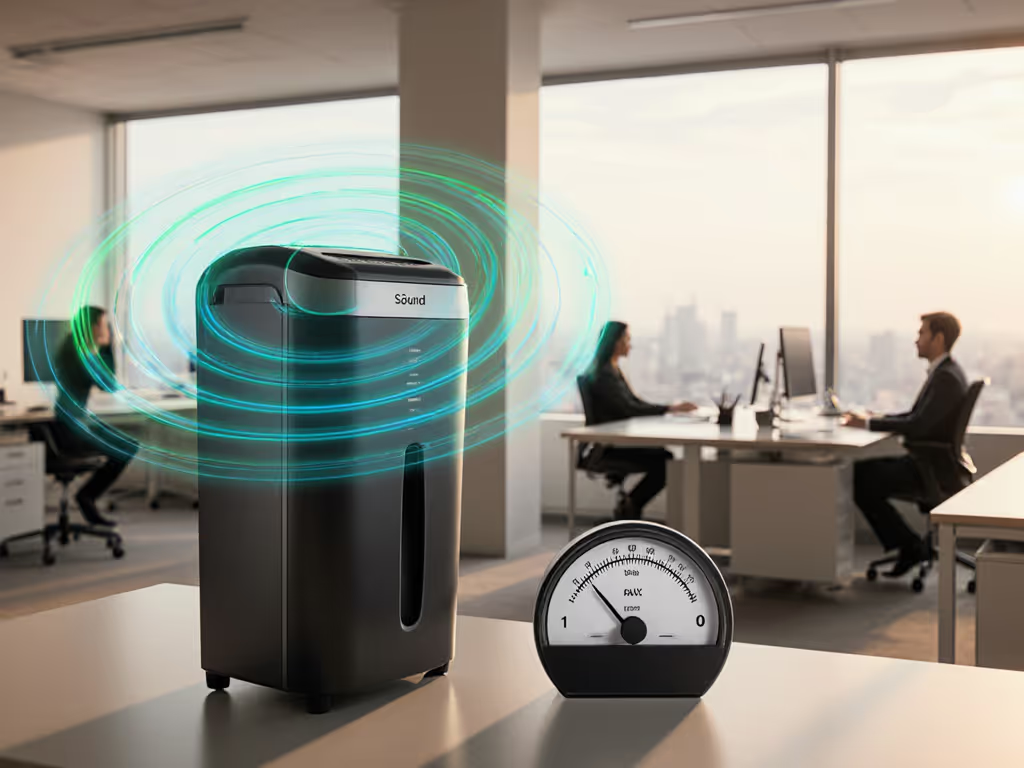
Choosing a good office shredder isn't just about security levels or sheet capacity, it is also a critical shredder noise comparison that impacts daily workflow and privacy compliance. In open-plan offices, home workspaces, or regulated clinics, noise levels dictate whether document destruction becomes a disruptive chore or a seamless part of operations. I've seen privacy programs fail not because of flawed policies, but because teams avoided shredding due to ear-splitting machines. When evaluating cheap paper shredders, remember: true value lies in noise-reduced shredding that aligns with your environment's tolerance. Let's cut through the marketing hype with real data.
Paper shredder noise isn't just an annoyance, it is a compliance risk. If your team dreads the 80-decibel roar of a standard cross-cut shredder, sensitive documents pile up in desks. That is a privacy breach waiting to happen. But what actually qualifies as quiet?
| Noise Level (dB) | Real-World Equivalent | Office Viability |
|---|---|---|
| 50-55 dB | Quiet library | ✅ Ideal for home offices, night use |
| 56-60 dB | Normal conversation | ✅ Optimal for open offices |
| 61-65 dB | Background office chatter | ⚠️ Acceptable but noticeable |
| 66+ dB | Busy street traffic | ❌ Disruptive; avoid for shared spaces |
Match the document risk to the shred, not the hype. A P-4 micro-cut shredder at 58 dB protects client data without shattering focus.
During a clinic records audit years ago, our shred policy was the easiest win. Why? We had mapped document categories to DIN levels, labeled bins, and used quiet machines. The auditor nodded and moved on. Good privacy practice is boring by design. No drama, just the right cut, used consistently. That is why I prioritize noise-reduced shredding where security and silence intersect.
Not necessarily, but you must check specs critically. Many cheap paper shredders hit 70+ dB because they skip sound insulation. True bargains balance cost and acoustics: look for models under $180 with verified sub-60 dB ratings. For example, the Bonsaii Heavy-Duty Shredder (58 dB) uses solid steel cutting cylinders that dampen vibration while delivering P-4 security. You pay for engineering, not just the brand label.
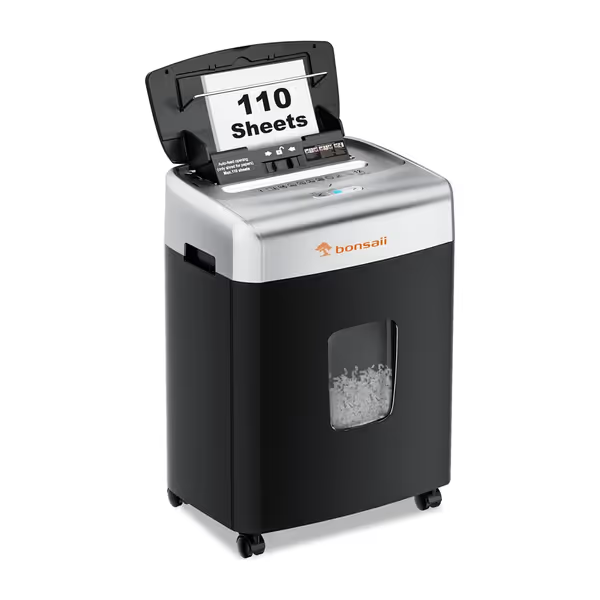
Avoid "whisper-quiet" claims. Demand actual decibel measurements, because marketing fluff costs you productivity.
DIN level spelled out: Higher security (P-5/P-6 micro-cut) usually means slower, quieter operation. For background on what each P-level means, see our P-1 to P-7 security levels guide. Why? Fine particles require slower rotation to prevent jams. A P-2 strip-cut shredder might scream at 75 dB while shredding 20 sheets rapidly, whereas a P-4 micro-cut like the Bonsaii C233-B chews 12 sheets at 58 dB. Risk category mapping is key: most offices need P-3/P-4 for PHI/PII (per HIPAA GLBA guidelines). Save P-5 for top-secret docs, it is overkill for bank statements.
Absolutely, if you match duty cycle to needs. That Bonsaii model features 30 minutes of continuous shredding (vs. budget models that overheat in 5 minutes). For paper piles:
Remember: chain-of-custody reminders matter most when volume spikes. Quiet machines encourage immediate disposal, reducing unsecured paper stockpiles.
P-4 micro-cut (≤ 160 mm² particles) is the sweet spot. It meets HIPAA GLBA for client records while running 5-15 dB quieter than entry-level cross-cut shredders. Silent document destruction does not mean zero noise, it means operating below the distraction threshold. At 58 dB, the Bonsaii lets you shred during Zoom calls without headphones. Higher-security P-5 units (like HSM models) dip to 55 dB but cost 2-3x more, so only justify if you handle state secrets.
Yes. Envelopes with windows, thick mailers, or credit cards can spike noise by 5-10 dB. Look for auto-reverse and ECC (Electronic Capacity Control) to prevent overload screams. The Bonsaii's sensor detects strain instantly, reducing jams that cause deafening screeches. Home vs. office policy pointers: In apartments, test-shred after 8 PM to avoid neighbor complaints. Offices should place shredders near interior walls (not glass partitions) to contain sound.
Forget "silent" gimmicks. Real-world decibel levels that shredders deliver depend on your space:
I've audited sites where teams unplugged shredders labeled "65 dB quiet" because they drowned out phone calls. Plain-language audit notes prove consistency beats specs:
"Shredder runs at 58 dB during 10-sheet batches. No team complaints in 6 months. Chain-of-custody logs show daily use."
That is boring. That is compliance. That is winning.
Noise is not a "nice-to-have", it is operational hygiene. When you match shredder noise comparison data to your team's environment, document destruction shifts from dreaded chore to automatic habit. Focus on machines that deliver:
For most privacy-conscious teams, noise-reduced shredding means prioritizing P-4 micro-cut units like the Bonsaii under $170. It is not about buying the quietest machine, it is about buying the right machine that gets used daily. After all, the most secure shredder is the one your team will not unplug.
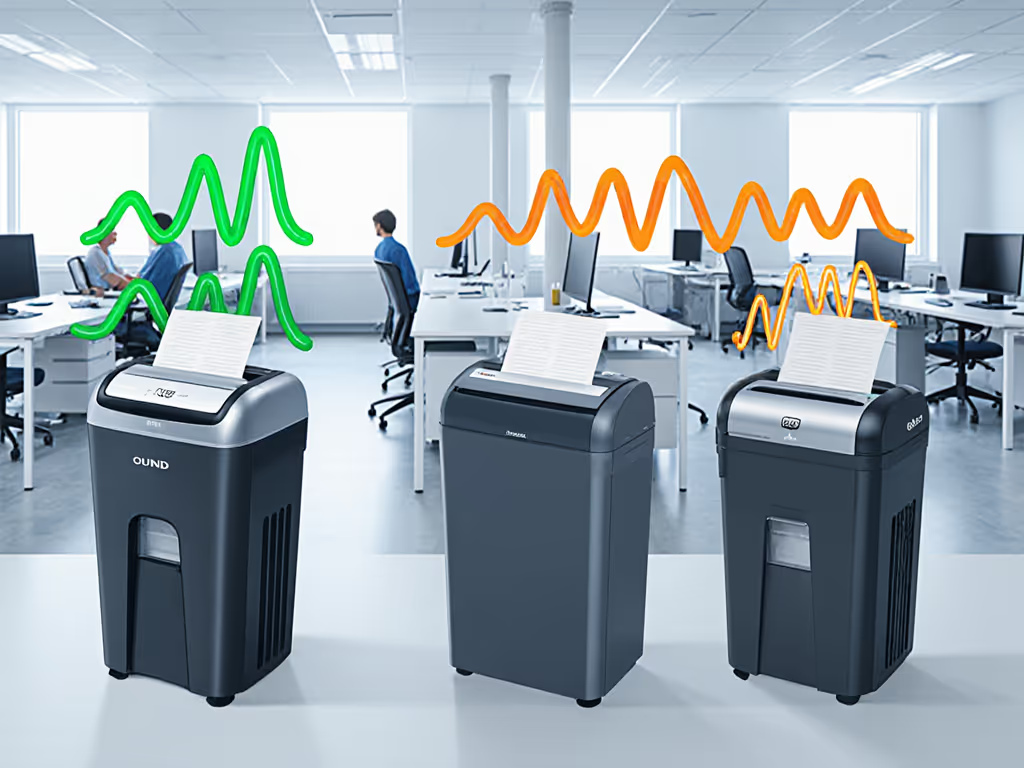
Disclaimer: This guidance reflects general best practices only. Consult legal counsel for specific compliance needs. Never destroy digital media with paper shredders.

Learn how bin size, security level, and design choices affect jams, dust, energy use, and maintenance - and use a simple formula and quick tests to choose the right capacity and keep shredding reliably.
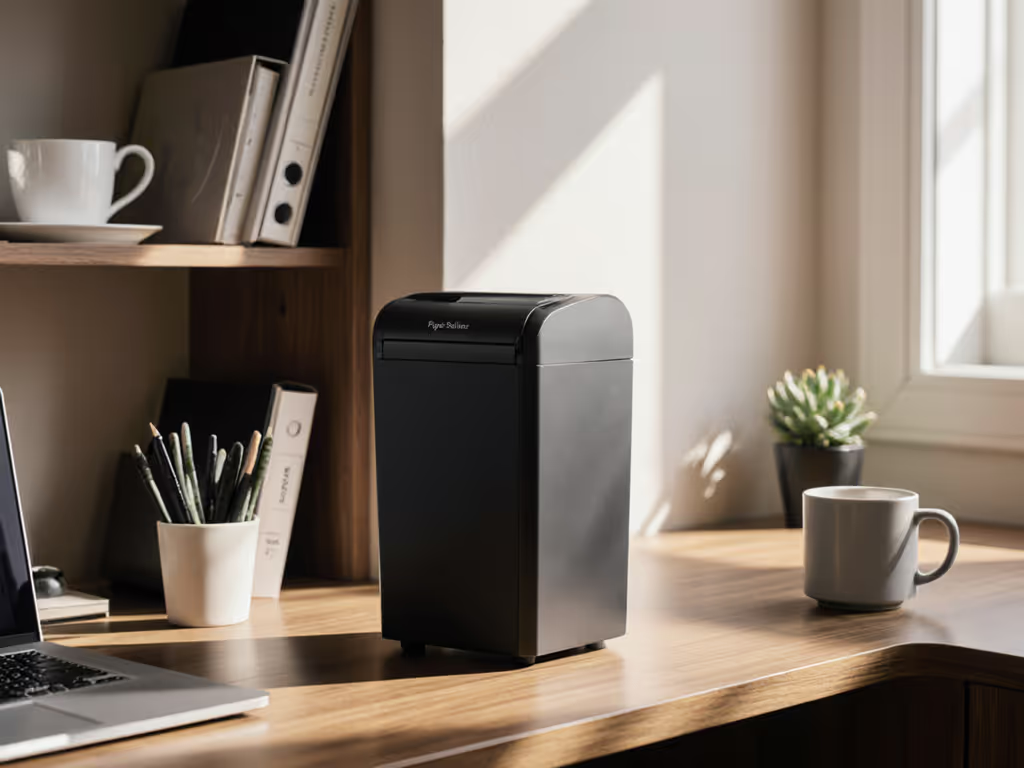
Choose a compact shredder that fits your space and habits with expert-tested picks, a simple decision framework, and a 2‑minute oil routine that prevents most jams. Learn the key security levels and jam‑risk features to keep shredding reliable with minimal maintenance.
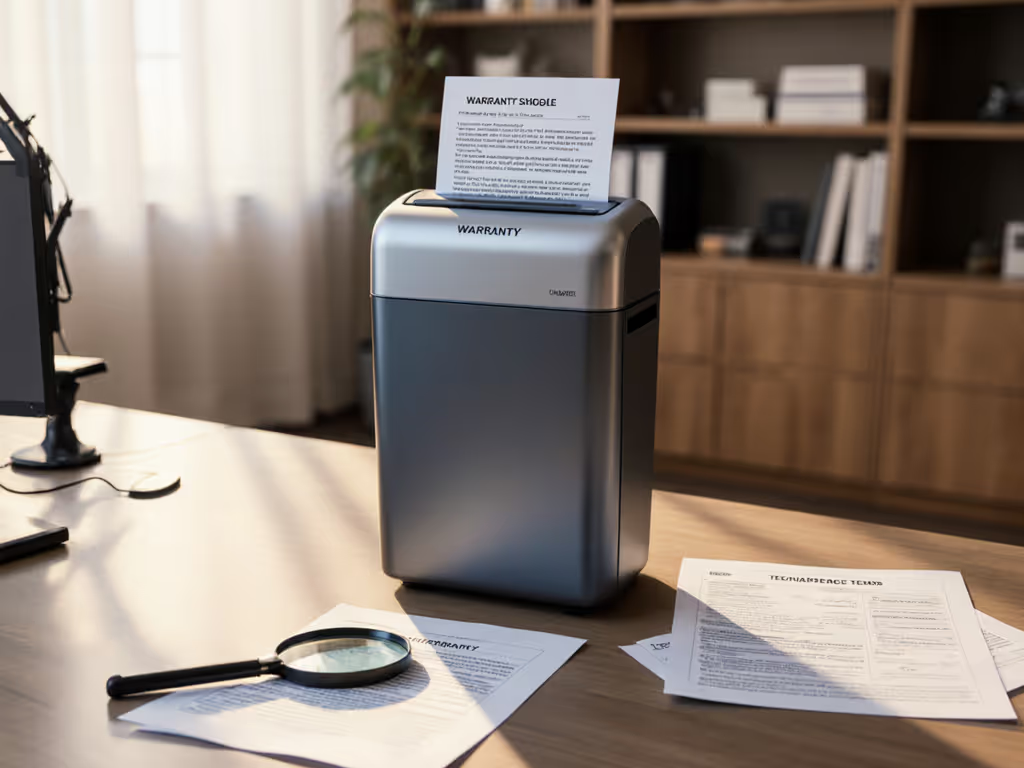
Decode shredder warranties - cutter vs. motor coverage, duty-cycle limits, and key exclusions - to align protection with your workload. Avoid costly repairs and compliance gaps by choosing terms that match real use.
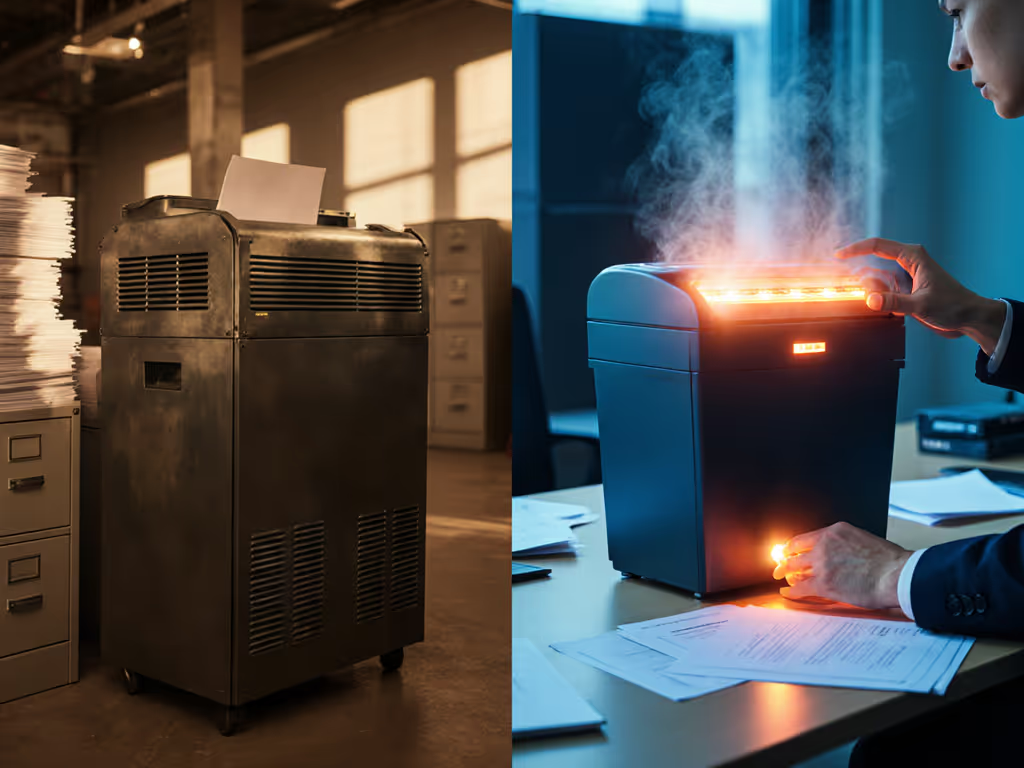
Prevent overheating and downtime by matching shredder type to real-world duty cycles, throughput, and security needs. Learn the key specs (DIN levels, thermal thresholds, and volume benchmarks) to decide between industrial and commercial models and build a consistent, right-sized destruction workflow.
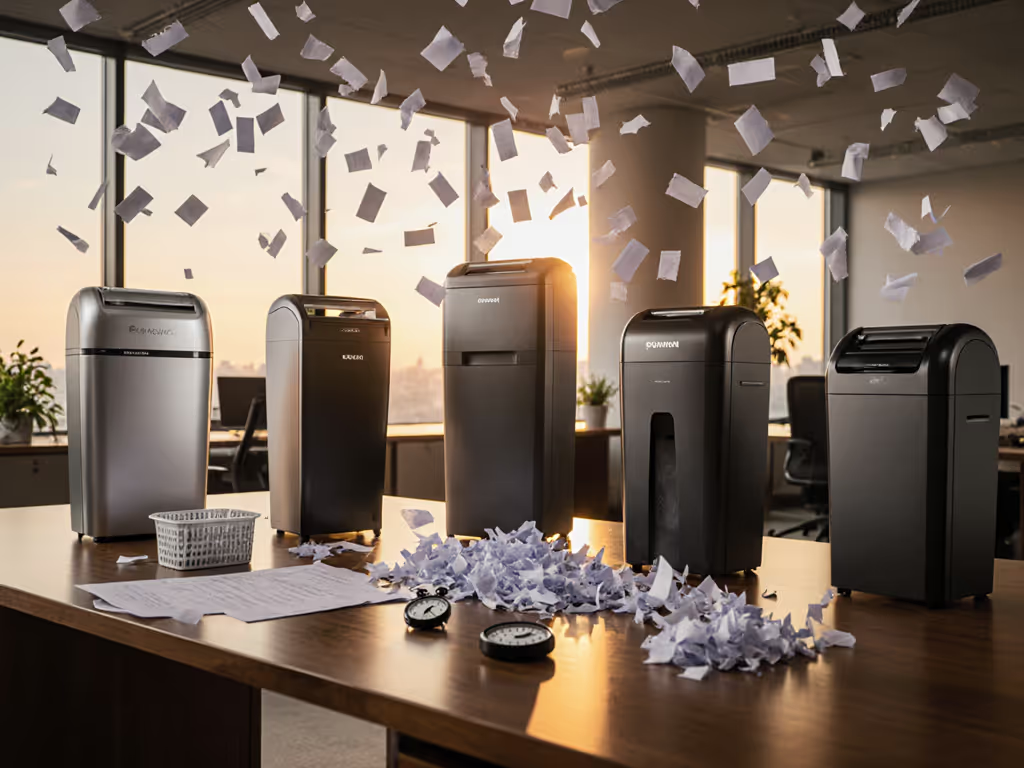
Real-world tests rank five cross-cut shredders by sustained throughput, jam rate, cooldown, noise, and footprint. Use the data to match a model to your duty cycle and security needs - so purge days run smoothly without jams or downtime.